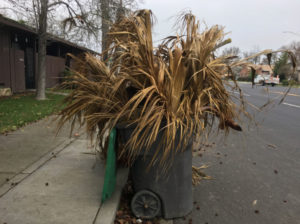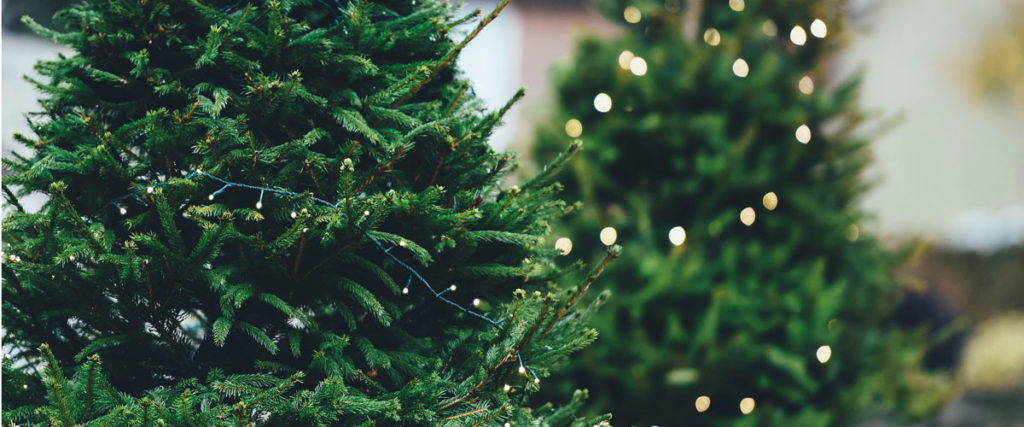
12-30-2018
Craving some New Year’s resolutions for your lifestyle that will have a serious impact on the planet? Look no further — these five eco-resolutions will do the trick.
 1. Avoid takeout food — or do takeout differently.
1. Avoid takeout food — or do takeout differently.
Takeout food creates a ton of waste. Well, a lot more than a ton. The boxes, cartons, cups, lids, bags, silverware, straws, napkins, packaged mini condiments — they all add up. Containers and packaging make up over 23 percent of the material that gets landfilled in the U.S. each year.
What can you do about it? First, get takeout less often. Either eat at home, or when you want restaurant food, take the time to dine in. Second, bring your own reusable takeout container! Instead of having a restaurant box up your food (in a container that will make its way into your garbage, recycling or compost within minutes), bring a reusable food container. Jars are perfect for beverages and other liquids. Third, if you are going to order takeout regardless, and you don’t want to use your own containers, simply refuse the unnecessary items: the plastic bag, the silverware, the condiments you won’t use, the napkins you don’t need. Every bit of trash you refuse helps make a difference and change the status-quo.
 2. Trade in paper towels for real towels.
2. Trade in paper towels for real towels.
According to The Atlantic, the U.S. spends $5.7 billion each year on paper towels — that’s nearly as much as the rest of the world combined. The waste adds up. Paper towels and other kinds of tissue paper make up 7.4 billion pounds of waste a year. To give you an idea of how much that is, that’s the weight of nearly 30,000 blue whales — more whales than exist on our planet today.
In other parts of the world, fewer people rely on paper towels. Rags are a popular go-to, along with scrubbing brushes and sponges. So take the plunge — if you don’t have towels on hand, visit your local thrift store to find some. Worried about absorbency? Loose-woven fabrics will work best to mop up spills. Worried about cleanliness? If you wash and dry your towels on hot settings, they will be plenty clean enough to use over and over again.
 3. Buy your clothing secondhand.
3. Buy your clothing secondhand.
The fashion industry is far from environmentally innocent. Globally, more than 8 percent of greenhouse-gas emissions are produced by the apparel and footwear industries. Not only does the majority of clothing get tossed instead of donated or recycled — most of the clothing that gets tossed is also nowhere near worn out.
The good news? Buying one item of used clothing extends its life by an average of 2.2 years. And by buying used instead of new, you’re reducing electricity use, and water use, greenhouse gas emissions, plus the amount of plastics used to make synthetic clothing. It isn’t just environmentally friendly — often, you can buy higher quality clothing for a fraction of its original price, so you’re getting more value from the money you spend.
You can find used clothing at secondhand stores, consignment shops, vintage boutiques, thrift shops, and resale websites. As far as online vendors go, ThredUp, Poshmark, The RealReal, eBay and depop are popular choices. Used clothing stores are all part of a growing industry called “recommerce.” Recommerce is a $20 billion industry, and it’s growing faster than sales of new clothing.
 4. Don’t toss it, repair it.
4. Don’t toss it, repair it.
Over the last 100 or so years, the U.S. has been slowly cultivating a culture of disposability. Even in the 60s, 70s and 80s, repairing an item was far more common than it is now. The disposable mentality we have is partly due to how cheap everything has become — clothing, electronics and appliances are all more affordable than they used to be. It makes sense that someone would rather replace a cheap, defective item than pay to have it repaired by a specialist.
However, the fix-it culture we lost touch with is making a rebound, and for good reason. We simply have too much trash, with the average American generating 4.4 lbs of waste each day. Instead of tossing items that need to be repaired, more people are trying to fix them.
So the next time you come across something you have that’s broken, think of how you could fix it. Can you do it yourself, using an iFixit manual or a YouTube video? Is there a local repair cafe or fix-it workshop you could visit to get help from a local expert? Or is it something a tailor, shoe repair shop, or electronics shop could help you with? Every time you prevent an item from making its way to the landfill you are making a difference.
 5. Sign up for Collection Reminders!
5. Sign up for Collection Reminders!
When you sign up for our collection reminders, not only do you get an email each week reminding you when it’s time to put out your carts, you’ll also get a weekly tip on how to be a better recycler and live a greener lifestyle! By following our tips, you can feel good about reducing your carbon footprint all year long.







 1. Avoid takeout food — or do takeout differently.
1. Avoid takeout food — or do takeout differently. 2. Trade in paper towels for real towels.
2. Trade in paper towels for real towels. 3. Buy your clothing secondhand.
3. Buy your clothing secondhand. 4. Don’t toss it, repair it.
4. Don’t toss it, repair it. 5. Sign up for Collection Reminders!
5. Sign up for Collection Reminders!
